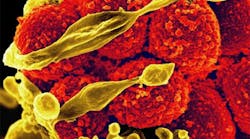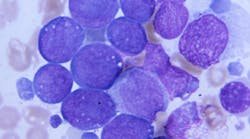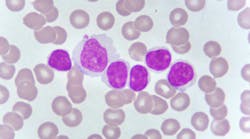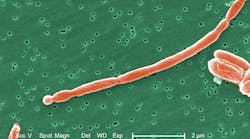Using a combination of computation and physical observation in the laboratory, researchers from McMaster University have unraveled a sophisticated process that some commonly occurring bacteria use to save themselves from the rifamycin class of antibiotics, which occur naturally and are also manufactured to treat infectious diseases.
Rifamycins work by binding to RNA polymerase, a protein essential for bacterial life.
The resistant bacteria, which occur widely in the environment and in some human pathogens, have developed a protein that can eject the antibiotic from RNA polymerase. Once the rifamycin is dislodged, they use specially adapted proteins to attack and destroy it.
The discovery shows that the mechanisms of antimicrobial resistance (AMR) are more complex and highly evolved than scientists had previously recognized.
Now Gerry Wright, who leads the McMaster-based Global Nexus for Pandemics and Biological Threats, and his colleagues are combing their database of tens of thousands of samples to see if other bacteria use parallel processes and whether they reveal vulnerabilities that can be exploited to create urgently needed new antibiotics.
Their work is described in a paper published online in the journal Molecular Cell. Wright’s co-authors are Matthew Surette, Kalinka Koteva and Nicholas Waglechner.
AMR is a huge and growing global health concern that should be commanding much more attention and far more research resources, Wright says.
Though the effectiveness of penicillin, rifamycin and other established antibiotic treatments is waning quickly, most pharmaceutical companies are not actively developing new antibiotics, he says.
Wright explains that drug discovery and development is tremendously expensive, and the financial return on investment in antibiotics would be low since they don’t generate as much revenue as prescription medications that patients use for years at a time.
AMR’s threat to public health is simply too big to ignore, and requires collaboration between governments, universities and manufacturers, Wright says.





